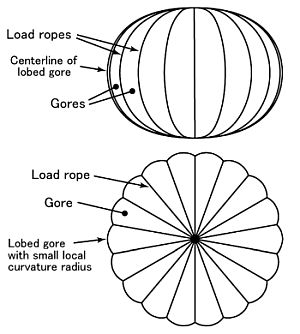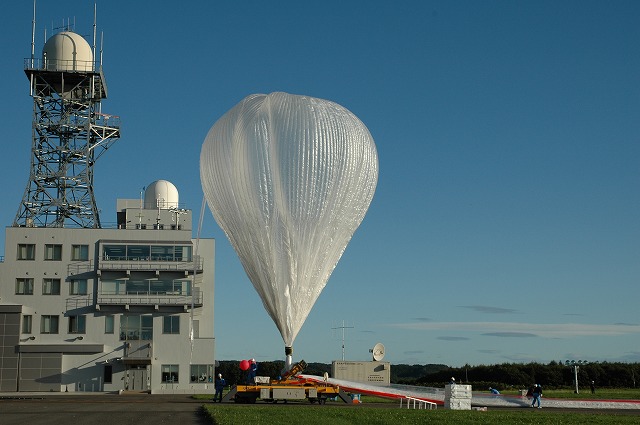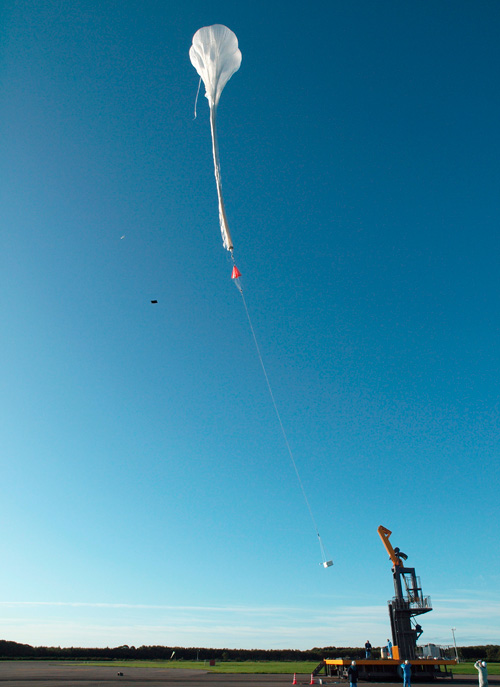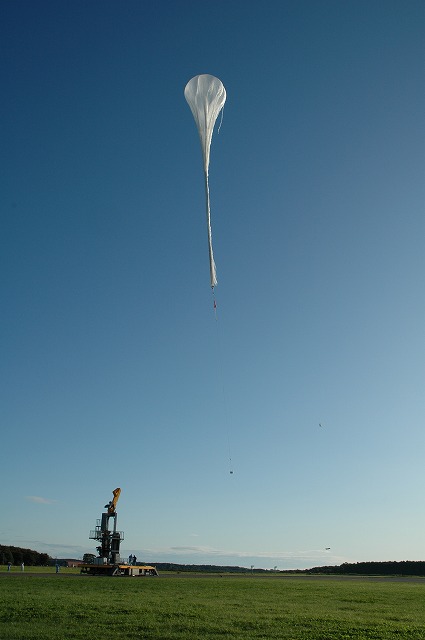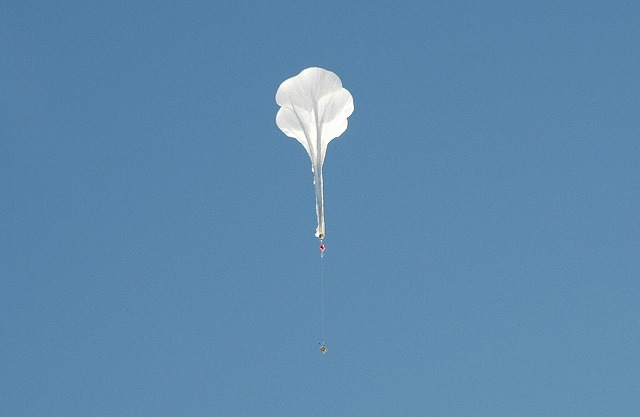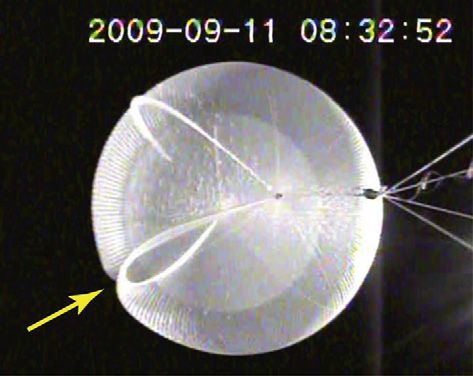Purpose of the flight and payload description
The Super Pressure Balloon (SPB) is a closed pressurized balloon that can keep a constant volume independent of the gas temperature. Therefore, without the help of ballast, the SPB can maintain the altitude more stable than the Zero Pressure Ballon. The differential pressure at the bottom (nadir) of the balloon has to be sufficiently high even at night so that the balloon can keep its shape without being deflated. Further, the SPB must withstand the differential pressure even during daytime, when the differential pressure will necessarily be higher than at night. Assuming a floating altitude of around 35 km and a diurnal gas-temperature variation of around 30 K, the maximum differential pressure required for the SPB is estimated to be about 100 Pa, which is one or two orders of magnitude higher than the differential pressure at the top (zenith) of the ZPB under an equivalent flight condition.
The basic concept of the SPB has been well known for decades, and the SPB has been expected to provide extended flight durations to science. However due to the requirement for a high differential pressure resistance, only small spherical SPB's are currently operative.
Since 1997, the Japanese Space Exploration Agency JAXA have developed the SPB with the goal in the near future of flight at 35 km for several months suspending a several-hundred kg science payload. As this SPB should have a differential pressure resistance higher than around 100 Pa with a suffcient safety factor, JAXA introduced the so-called "three-dimensional-gore lobed-pumpkin design" manufacturing concept on which the gore film is cut from a slightly larger mold and its seams are attached to the load ropes by foreshortening the film. In the figure at left above is an scheme of the fully inflated balloon. This method enables the gore film to shape a bulge with a small local curvature radius, which relaxes the tensile stress of the film and increases the differential pressure resistance of the balloon. The load ropes, which run along meridian planes between the two poles of the balloon, aid to sustain the meridian tension.
The first SPB balloon tested in flight in 1997 was a small one with 2.8 m diameter. After that JAXA carried out about 30 ground tests and about 10 test flights, feeding back their results to improve the SPB design step by step. As an intermediate step to the practical-sized SPB, in 2009 was carried out this test flight of a pumpkin-SPB with a volume of 60,000 m3.
Details of the balloon flight
Balloon launched on: 9/11/2009 at 6:19 jst
Launch site: Multipurpose Aviation Research Field, Taiki-Cho, Hokkaido, Japan
Balloon launched by: Institute of Space and Astronautical Science (ISAS) / Japan Aerospace Exploration Agency (JAXA)
Balloon manufacturer/size/composition: Super Pressure Balloon 60.000 m3
Flight identification number: B09-07
End of flight (L for landing time, W for last contact, otherwise termination time): 9/11/2009
Balloon flight duration (F: time at float only, otherwise total flight time in d:days / h:hours or m:minutes - ): 3 h
The balloon was launched as mission "B09-07" at 6:19 JST on September, 11, 2009 from the Taiki Aerospace Research Field (TARF) in Hokkaido. The balloon ascended at a speed of approximately 270 meters/minute and about two hours after the launch, the balloon reached float altitude of 32.6 km over the Pacific Ocean, about 130 km east of the launch base, but did not fully deploy. As shown in the last image at right, an undesired so-called "S-cleft" with about 19 gores (out of 192 gores in total) was formed. All available ballast was dropped to make the balloon ascend further to force its pressurization. Despite that, the cleft was not removed, and the balloon burst during pressurization. The balloon and payload descended to the sea about 40 km south of Hamanaka-Cho, Hokkaido.
The differential pressure at burst was 74 Pa, which was consistent with the pressure resistance of the balloon estimated by assuming that the rest of 173 gores deployed without problem.
After the failed flight, a series of ground tests were made to reproduce the anomaly. As a result, JAXA shifted its approach to the SPB design by changing the shape of the balloon from the pumpkin-shaped one to a modified design of the lobed SPB, denominated "tawara" defined as a lobed pumpkin balloon divided along the equator plus a lobed-cylinder with the same cross section inserted into the equator gap. The new design name represents the Japanese traditional straw bag of rice, which is shaped like this balloon design.
External references
- Details of the mission (in Japanese) ISAS website
- Progress of super-pressure balloon development: A new "tawara" concept with improved stability Advances in Space Research, 48(6), 1136 (2011)
3951If you consider this website interesting or useful, you can help me to keep it up and running with a small donation to cover the operational costs. Just the equivalent of the price of a cup of coffee helps a lot.

